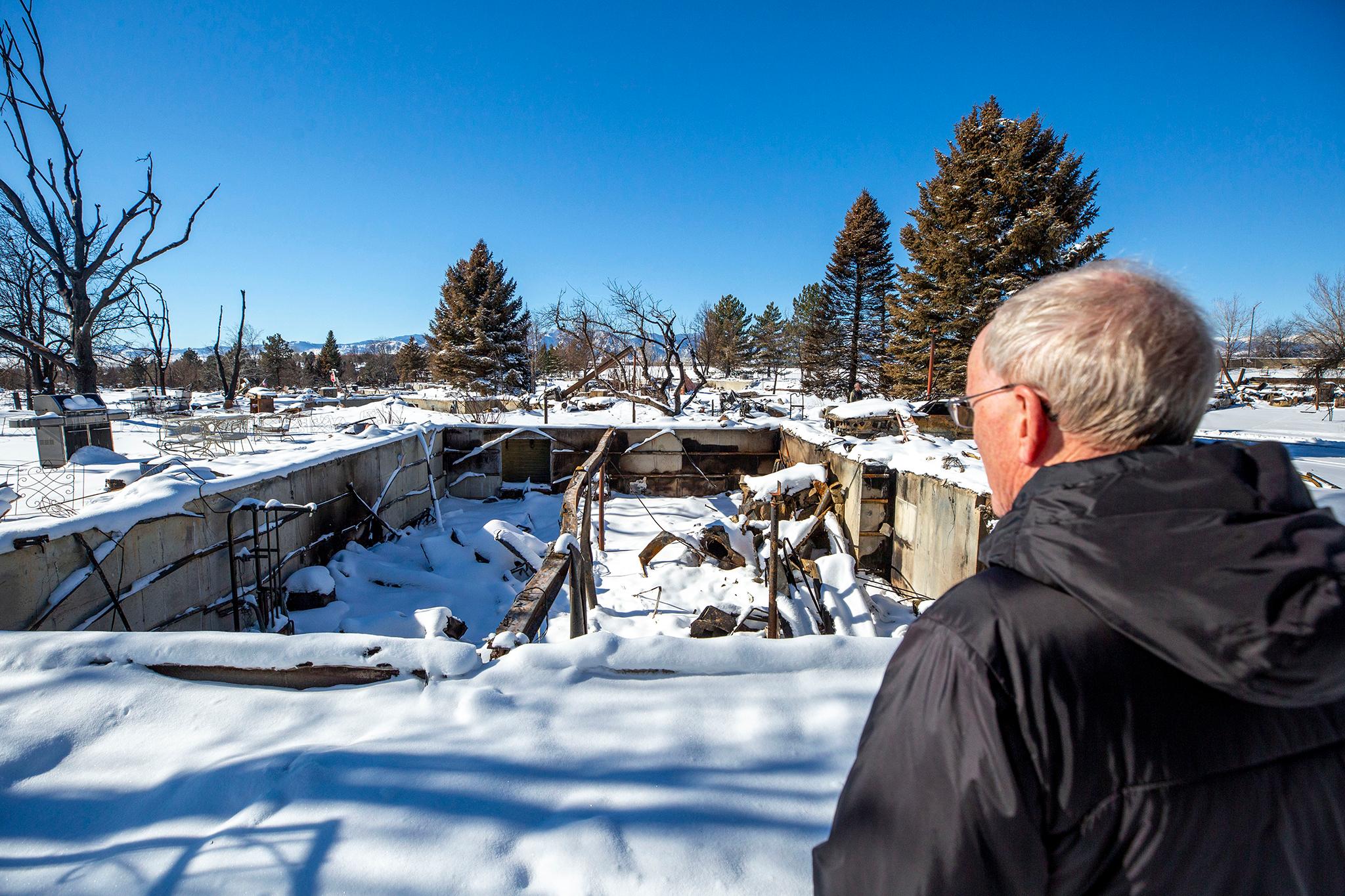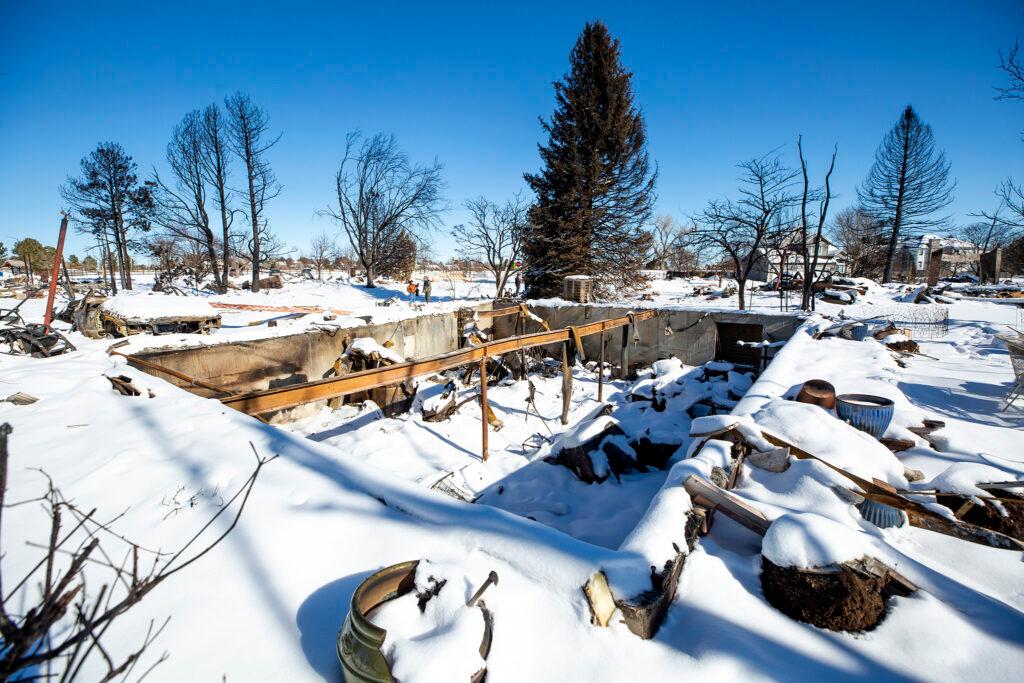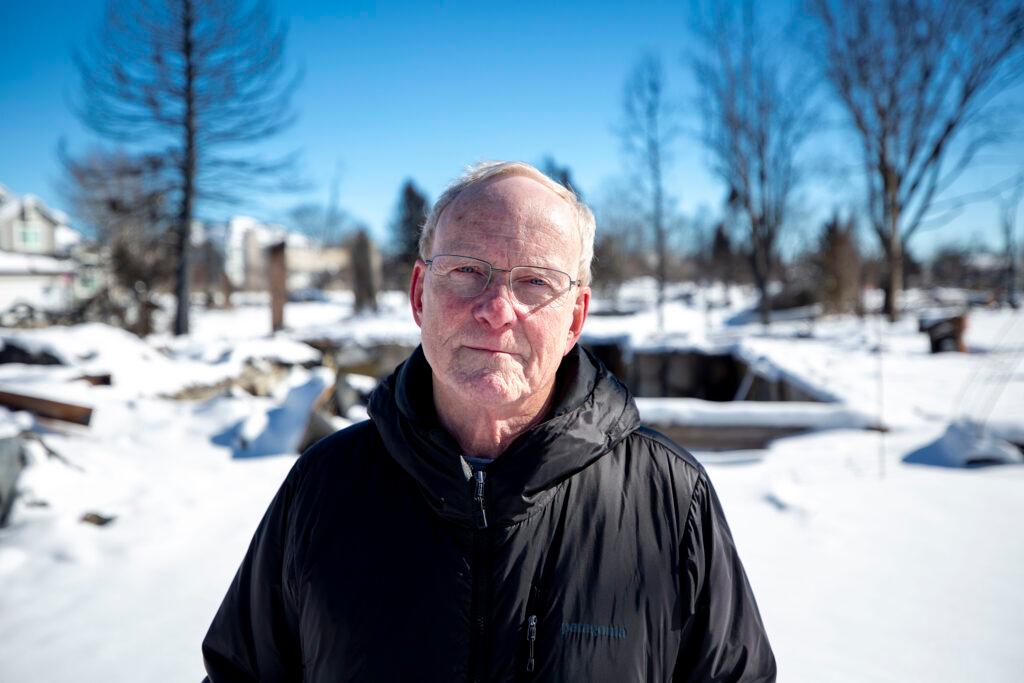
Larry Donner did what he could to protect his Louisville home.
As the retired fire chief for the city of Boulder, he knew wildfire risk wasn’t limited to forested areas or mountains. The short-grass prairie surrounding his house had evolved to burn, which is why he hardened his home with concrete siding and installed a fire-resistant roof.
Even the wooden deck was too much of a liability. Donner demolished it because he knew the structure could draw the flames of a wildfire into his home.
All those efforts weren't enough to protect his house from the Marshall fire. The Dec. 30 blaze started in grassy open spaces near Superior amid a record drought and wind gusts topping 100 miles per hour. By the time it reached Donner's neighborhood, the fire was leaping from home to home in what's known as an urban conflagration. Based on the burn patterns on scraps of concrete siding, Donner suspects an ember crashed into his two-story home and incinerated the structure from the inside out.
Donner said the loss reveals the limits of fire-resistant homes. If his neighbors want to stay safe, he said Front Range communities need to start seeing fire not only as a threat but as one tool that could reduce fuels in grassy open spaces. Mowing grass is another option, but he said it doesn’t come with the ecosystems benefits of restoring a native process.
In either case, Donner said leaving those areas untouched only increases the odds of another disaster like the Marshall fire.
"It's hard to say, but I believe our house might still be here had they'd been more aggressive and had they managed the land more appropriately," he said.

Prairie fires aren't 'unprecedented'
Many local leaders expressed shock at the setting of the Marshall fire, now considered the most destructive in state history. Unlike other recent Colorado blazes, the disaster played out in suburban grasslands, not sparsely populated forests or mountain areas.
Victoria Donovan, a post-doctoral researcher at the University of Nebraska, said the location shouldn't be surprising.
Colorado’s Front Range is the western edge of the Great Plains. Before Euro-American settlement brought a culture of fire suppression, Donovan said most places throughout the region burned every two to 12 years. Native Americans set many of those blazes. Research on those practices has found it helped reduce fire risk and preserve rangeland for wildlife.
Donovan said restoring the practice could help control a rapid rise in uncontrolled wildfires across North American grasslands. A 2017 study she co-authored found the number of average acres burned across the Great Plains spiked five-fold between 1985 and 2014. The increase was highest along the western edge of the region, including parts of eastern Colorado and the Front Range.
"The biggest thing we need to overcome as a society is a fear of fire," Donovan said. "Obviously, fire can be extremely damaging, but it's a fundamental part of the systems we live in."
One benefit of prescribed burning is that it limits what Donovan and other fire scientists call "woody encroachment," which describes bushes and trees taking over former grasslands. The heavier vegetation can fuel more extreme fires and launch embers towards structures.
A recent study noted woody plants have grown more common on 1.8 million acres across the western U.S., an area more than twice the size of Nebraska. A mapping tool developed by the University of Montana also highlights the Front Range as one area at high risk of woody encroachment, including the grassland where the Marshall fire ignited before its deadly sprint into Louisville and Superior.
John Potter, the resource and stewardship manager for the City of Boulder Open Space and Mountain Parks Department, oversees a large portion of what's now the Marshall fire burn scar. He said there's a good chance woody material was more important than grass as the fire spread.
"Once it hit a cottonwood or a willow tree, then that was sending up sparks and embers miles and miles downwind," Potter said.

It's not easy to set a fire in the suburbs
Many Boulder County land managers agree there's a need for more controlled burns across both grasslands and forestlands along the Front Range. But setting those fires isn't easy in such a heavily populated area.
Boulder County communities have plans for controlled burns on thousands of acres to reduce wildfire risk, clear overgrown vegetation around irrigation ditches and promote overall ecosystem health, Potter said. The challenge is finding ways to follow through. Over the last five years, Potter said his office has only been able to burn about eight acres per year across the city's vast 46,000-acre open space system.
"That's really due to the complexities of using prescribed fire as a tool," Potter said.
One complexity is air quality regulations. Colorado does not allow prescribed fires below 6,400 feet during winter when smoke is more likely to linger over populated areas. Over the summer, no fires are allowed on ozone action days, which have become more common during Front Range summers.
Potter said recent weather patterns have further closed the available window for prescribed fires. Wet weather made it impossible to start controlled fires on many days last spring. A dry fall made the same plans too dangerous.
If there is a day that works, land managers still need to gather available firefighters and carefully watch local weather conditions. Potter said all those barriers led his office to focus on other ways to reduce grassland fuels, including grazing cattle.
Prescribed burning efforts were more focused in forested areas, where his office assumed people faced a greater risk. Open Space and Mountain Parks had no immediate plans to apply fire in its portion of the Marshall fire burn zone.
"Now, with this lesson from the Marshall fire, we have to be looking at grasslands as well as forestlands," Potter said.
Some fire experts caution against a rush to set more controlled fires in suburban grasslands. Rodrigo Moraga, the chairperson of the Colorado Prescribed Burn Council and a wildfire consultant with Anchor Point Group, said the technique could be an important tool for Front Range communities — but it's one they should wield carefully.
There's always the possibility of a controlled burn escaping into nearby populated areas. If fire managers want to earn public trust, he said they have to be transparent about the risks and the benefits.
"Right now, people around Boulder are going to be very uncomfortable if we start lighting fires, and rightly so,” Moraga said. “Anytime an event like this happens, you have to be sensitive to that."








